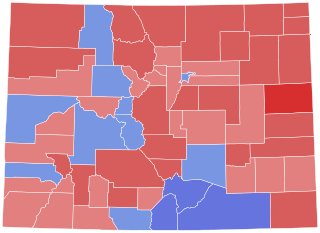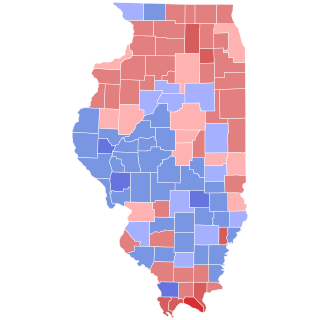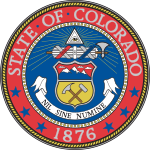
Presidential elections were held in the United States on November 7, 1876. Republican Governor Rutherford B. Hayes of Ohio very narrowly defeated Democrat Governor Samuel J. Tilden of New York. Following President Ulysses S. Grant's decision to retire after his second term, U.S. Representative James G. Blaine emerged as frontrunner for the Republican nomination; however, Blaine was unable to win a majority at the 1876 Republican National Convention, which settled on Hayes as a compromise candidate. The 1876 Democratic National Convention nominated Tilden on the second ballot.

Presidential elections were held in the United States from November 2 to December 5, 1792. Incumbent President George Washington was elected to a second term by a unanimous vote in the electoral college, while John Adams was reelected as vice president. Washington was essentially unopposed, but Adams faced a competitive re-election against Governor George Clinton of New York.

Presidential elections were held in the United States from November 4 to December 7, 1796, when electors throughout the United States cast their ballots. It was the first contested American presidential election, the first presidential election in which political parties played a dominant role, and the only presidential election in which a president and vice president were elected from opposing tickets. Incumbent vice president John Adams of the Federalist Party defeated former secretary of state Thomas Jefferson of the Democratic-Republican Party.

James Hamilton Peabody was the 13th and 15th Governor of Colorado, and is noted by some for his public service in Cañon City and by others for his brutality in crushing the miners' strike in Cripple Creek in 1903–04.

Alva Blanchard Adams Sr. was an American lawyer and Democratic politician from Pueblo, Colorado. He served nine years as a United States senator from Colorado, serving by appointment from 1923 to 1924, then serving again from 1933 until his death in 1941. He was the first U.S. senator from Colorado who was born in Colorado. He is the namesake of the Alva B. Adams Tunnel under Rocky Mountain National Park.

Jesse Fuller McDonald was an American public official, civil engineer and surveyor, who served as the 16th governor of Colorado from 1905 to 1907.
The following table indicates the party of elected officials in the U.S. state of Colorado:

The 2012 United States presidential election in Colorado took place on November 6, 2012, as part of the 2012 United States presidential election in which all 50 states plus the District of Columbia participated. Colorado voters chose nine electors to represent them in the Electoral College via a popular vote pitting incumbent Democratic President Barack Obama and his running mate, Vice President Joe Biden, against Republican challenger and former Massachusetts Governor Mitt Romney and his running mate, U.S. Representative Paul Ryan. Obama and Biden carried Colorado with 51.48% of the popular vote to Romney's and Ryan's 46.12%, thus winning the state's nine electoral votes by a 5.36% margin.

The 1944 United States Senate special election in Colorado took place on November 7, 1944. Incumbent Republican senator Eugene Millikin, who was first appointed to fill Alva B. Adams's seat in 1941 and re-elected at the ensuing special election in 1942, ran for re-election to his first full term. In the general election, he faced wealthy Denver attorney Barney L. Whatley. Millikin benefited from the strong Republican performance in Colorado—Thomas E. Dewey and Governor John C. Vivian both won their respective elections by decisive margins—and cruised to a landslide victory over Whatley.

The 1942 United States Senate special election in Colorado took place on November 3, 1942. Democratic senator Alva B. Adams died in office on December 1, 1941, and Republican Governor Ralph L. Carr appointed Denver oilman Eugene Millikin to fill the vacancy. Millikin ran for election for the remainder of Adams's term. He was opposed in the general election by James A. Marsh, the former chairman of the state Democratic Party. Aided in part by the nationwide Republican landslide, Millikin easily defeated Marsh to serve out the remainder of the term.

The 1924 United States Senate special election in Colorado took place on November 4, 1924, to fill the remainder of the term for which Samuel D. Nicholson was elected in 1920. Nicholson died in office on March 24, 1923, and Democratic Governor William Ellery Sweet appointed Alva B. Adams, a prominent Pueblo attorney, to fill the vacancy. Adams, however, declined to be a candidate in the special election, instead challenging incumbent Republican Senator Lawrence C. Phipps in the regular election the same year.

The governor of Colorado is the head of government of the U.S. state of Colorado. The governor is the head of the executive branch of Colorado's state government and is charged with enforcing state laws. The governor has the power to either approve or veto bills passed by the Colorado General Assembly, to convene the legislature, and to grant pardons, except in cases of treason or impeachment. The governor is also the commander-in-chief of the state's military forces.

The 1913 Massachusetts gubernatorial election took place on November 4, 1913. Democratic Lieutenant Governor David I. Walsh defeated the Progressive, Republican and independent candidates Charles S. Bird, Representative Augustus Peabody Gardner and incumbent Governor Eugene Foss with 39.77% of the vote. Suffolk County was the only county to give more than 50% of its vote to a candidate and had given Walsh 53.98% of its vote.

United States gubernatorial elections were held on November 7, 1905, in four states. Virginia holds its gubernatorial elections in odd numbered years, every 4 years, following the United States presidential election year. Massachusetts and Rhode Island at this time held gubernatorial elections every year. They would abandon in 1920 and 1912, respectively.

The 1908 Illinois gubernatorial election was held on November 3, 1908.

The 1906 Colorado gubernatorial election was held on November 6, 1906. Republican nominee Henry Augustus Buchtel defeated Democratic nominee Alva Adams with 45.59% of the vote.

The 1902 Colorado gubernatorial election was held on November 4, 1902. Republican nominee James Hamilton Peabody defeated Democratic nominee E. C. Stimson with 46.92% of the vote.

The 1920 Illinois gubernatorial election was held on November 2, 1920.

The 1932 United States Senate elections in Colorado took place on November 8, 1932. Incumbent Republican Senator Charles W. Waterman announced that he would not seek re-election to a second term. Attorney Karl C. Schuyler won the Republican nomination to succeed Waterman and faced former Senator Alva B. Adams, the Democratic nominee, in the general election.





















